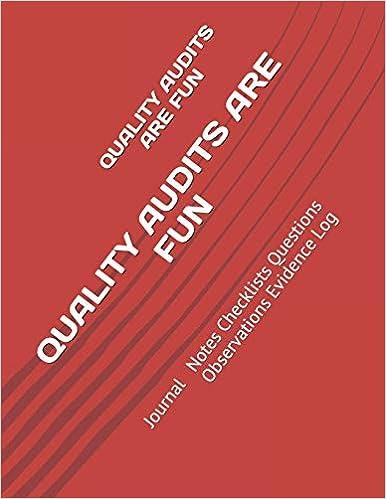Question
Y Company began the accounting period with $60,000 of merchandise, and net cost of purchases was $240,000. A physical inventory showed $72,000 of merchandise unsold
"Y" Company began the accounting period with $60,000 of merchandise, and net cost of purchases was $240,000. A physical inventory showed $72,000 of merchandise unsold at the end of the period. The cost of goods sold of Y Company for the period is:
Select one:
a. $300,000.
b. $228,000.
c. $252,000.
d. $168,000.
e. None of the above.
Question 2
Not yet answered
Marked out of 10.00
Flag question
Question text
A business purchased merchandise for $12,000 on account; terms are 2/10, n/30. If $2,000 of the merchandise was returned and the remaining amount due was paid within the discount period, the purchase discount would be:
Select one:
a. $1,200.
b. $200.
c. $240.
d. $1,000.
e. $3,600.
Question 3
Not yet answered
Marked out of 10.00
Flag question
Question text
On a sales invoice, "2/10, n/30" means
Select one:
a. Pay the invoice by February 10, or November 30th.
b. If paid within 2 days, take a cash discount of 10%. Otherwise, the full amount is due within 30 days.
c. Nothing. Things like that are usually typos.
d. If paid within 10 days, take a cash discount of 2%. Otherwise, the full amount is due within 30 days.
e. Pay for two items within 10 days, and the remaining items (n) within 30 days.
Question 4
Not yet answered
Marked out of 10.00
Flag question
Question text
The major differences between unclassified and classified income statements are
Select one:
a. A classified income statement only has two categoriesrevenues and expenses. An unclassified income statement divides both revenues and expenses into operating and non-operating items.
b. An unclassified income statement is made available to the public, while a classified income statement is private.
c. None of these.
d. An unclassified income statement only has two categoriesrevenues and expenses. A classified income statement divides both revenues and expenses into operating and non-operating items.
e. There is no real difference. The terminology depends upon the company's industry classification.
Question 5
Not yet answered
Marked out of 10.00
Flag question
Question text
Gross margin percentage is calculated by
Select one:
a. (Gross margin divided by Net inventory turnover)*100.
b. None of these.
c. (Net cost of sales divided by Net Sales)*100.
d. (Gross margin divided by Net sales)*200
e. ((Gross margin minus non-operating expenses) divided by Gross Sales).
Step by Step Solution
There are 3 Steps involved in it
Step: 1

Get Instant Access to Expert-Tailored Solutions
See step-by-step solutions with expert insights and AI powered tools for academic success
Step: 2

Step: 3

Ace Your Homework with AI
Get the answers you need in no time with our AI-driven, step-by-step assistance
Get Started


